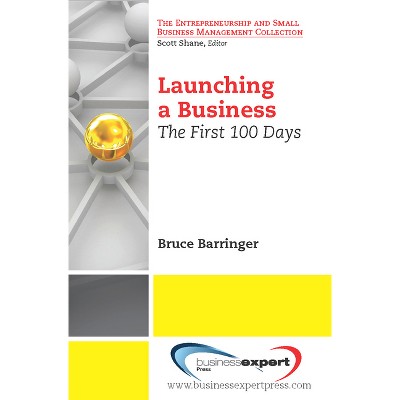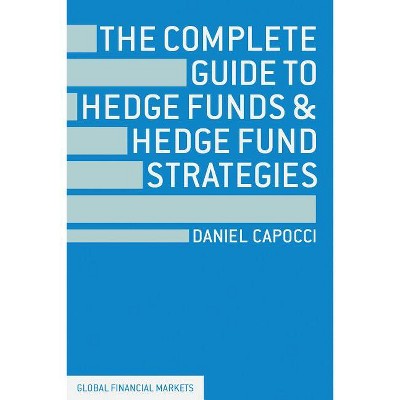What Hedge Funds Really Do - by Philip J Romero & Tucker Balch (Paperback)

About this item
Highlights
- This book draws the curtain back on the core building blocks of many hedge fund strategies.What do hedge funds really do?
- About the Author: Dr. Philip J. Romero was an economist, policy analyst, band applied mathematician, and former California chief economist.
- 146 Pages
- Business + Money Management, Investments & Securities
Description
About the Book
When I managed a hedge fund in the late 1990s, computer-based trading was a mysterious technique only available to the largest hedge funds and institutional trading desks. We've come a long way since then. With this book, Drs. Romero and Balch lift the veil from many of these once-opaque concepts in high-tech finance. We can all benefit from learning how the cooperation between wetware and software creates fitter models. This book does a fantastic job describing how the latest advances in financial modeling and data science help today's portfolio managers solve these greater riddles. --Michael Himmel, Managing Partner, Essex Asset Management I applaud Phil Romero's willingness to write about the hedge fund world, an industry that is very private, often flamboyant, and easily misunderstood. As with every sector of the investment landscape, the hedge fund industry varies dramatically from quantitative "black box" technology, to fundamental research and old-fashioned stock picking. This book helps investors distinguish between these diverse opposites and understand their place in the new evolving world of finance. --Mick Elfers, Founder and Chief Investment Strategist, Irvington CapitalBook Synopsis
This book draws the curtain back on the core building blocks of many hedge fund strategies.
What do hedge funds really do? These lightly regulated funds continually innovate new investing and trading strategies to take advantage of temporary mispricing of assets (when their market price deviates from their intrinsic value). These techniques are shrouded in mystery, which permits hedge fund managers to charge exceptionally high fees. While the details of each fund's approach are carefully guarded trade secrets, this book draws the curtain back on the core building blocks of many hedge fund strategies.
As an instructional text, it will assist two types of students:
- Economics and finance students interested in understanding what "quants" do, and
- Software specialists interested in applying their skills to programming trading systems.
What Hedge Funds Really Do provides a needed complement to journalistic accounts of the hedge fund industry, to deepen the understanding of nonspecialist readers such as policy makers, journalists, and individual investors.
The book is organized in modules to allow different readers to focus on the elements of this topic that most interest them. Its authors are a fund practitioner and a computer scientist (Balch), in collaboration with a public policy economist and finance academic (Romero).
Review Quotes
When I managed a hedge fund in the late 1990s, computer-based trading was a mysterious technique only available to the largest hedge funds and institutional trading desks. We've come a long way since then. With this book, Drs. Romero and Balch lift the veil from many of these once-opaque concepts in high-tech finance. We can all benefit from learning how the cooperation between wetware and software creates fitter models. This book does a fantastic job describing how the latest advances in financial modeling and data science help today's portfolio managers solve these greater riddles. -Michael Himmel, Managing Partner, Essex Asset Management
I applaud Phil Romero's willingness to write about the hedge fund world, an industry that is very private, often flamboyant, and easily misunderstood. As with every sector of the investment landscape, the hedge fund industry varies dramatically from quantitative "black box" technology, to fundamental research and old-fashioned stock picking. This book helps investors distinguish between these diverse opposites and understand their place in the new evolving world of finance. -Mick Elfers, Founder and Chief Investment Strategist, Irvington Capital
About the Author
Dr. Philip J. Romero was an economist, policy analyst, band applied mathematician, and former California chief economist. He was Dean and also was Professor of Business Administration at the University of Oregon's Lundquist College of Business prior to his passing.










